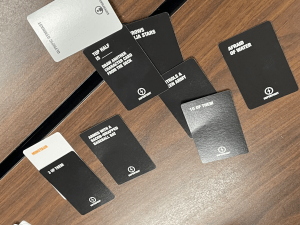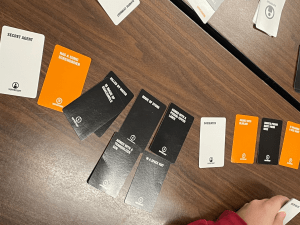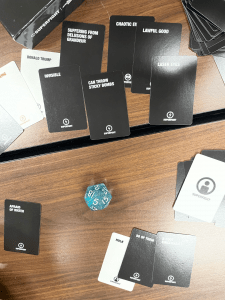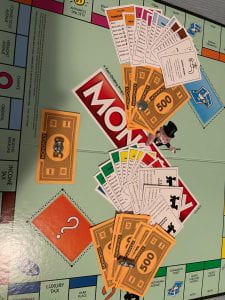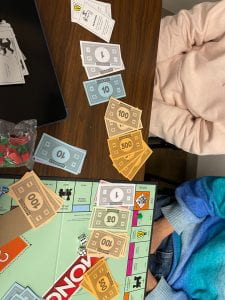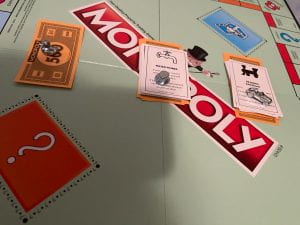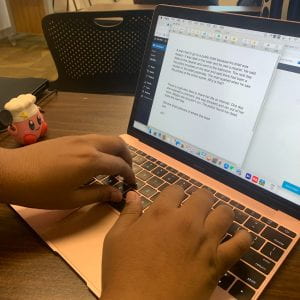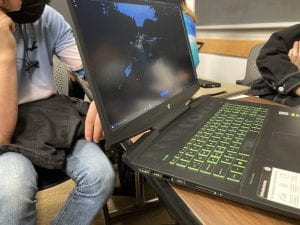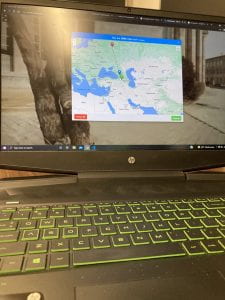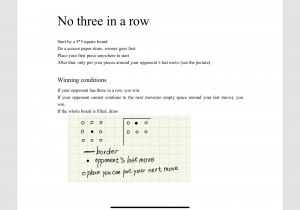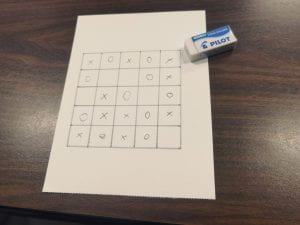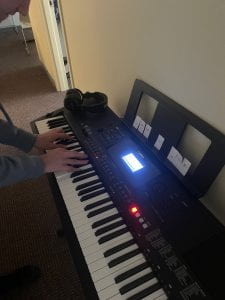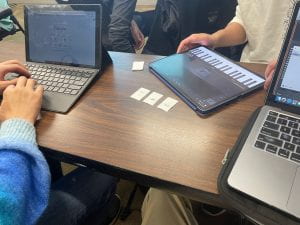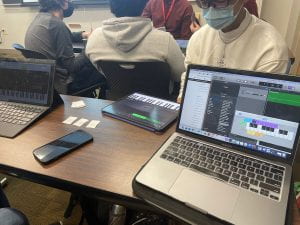Games Rules:
Each turn the Art Critic chooses 3 cards from the themes pile. They choose their favourite and shuffle the remaining 2 back into the deck. Then the Art Critic tells the other players, The Artist, the theme for their piece of art. The Artists have 3 minutes to create a piece of art using images from magazines or news papers that fits the theme. Once 3 minutes is up, The Artists stop working and present their piece of art to the Art Critic and talk about what they made. The Art Critic, then, chooses their favorite piece of art and that Artist gets a point. Lastly the role of Art Critic is passed to the next player and the game repeats. First to 5 points wins.
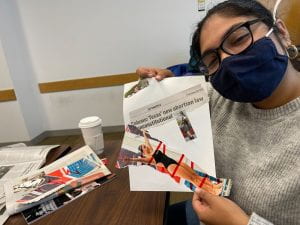
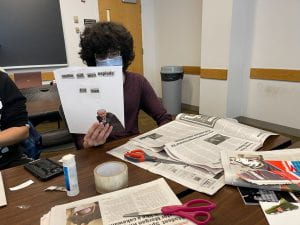

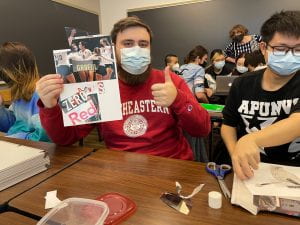 )
)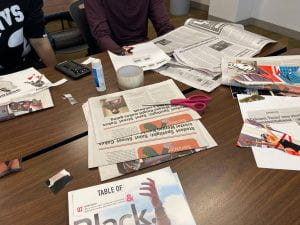
Artist Statement:
My game was heavily inspired by the collage artwork that was very prevalent in the DADA movement. The piece that I enjoyed the most and that I drew the most inspiration from was Hannah Höch’s, Bouquet of Eyes. I love this piece because I find the human eye extremely fascinating as it is incredibly complex and beautiful at the same time, and this bouquet made up of eyes interested me a lot. Another thing I took inspiration from were DADA heads; they took old hat racks and added ordinary objects to them and they became something so different. I really enjoy the idea of taking something simple and plain and adding things from your environment to make it unique and extraordinary. Raoul Hausmann’s Mechanical Head is one of my favorite DADA heads because all he did was add normal objects to this hat rack but it made the hat rack so much more. While I was making my game I also took inspiration from some already existing games, mainly pictionary and cards against humanity. I think Pictionary is such a great game because it lets every player be creative but also unique at the same time. I wanted to capture that feeling in the game I was making; I wanted my players to take a central theme and put their own twist on it, that way they had to be creative. Cards against humanity works really well in my opinion because it lets the players choose what they like and don’t like. This lets the players have more fun because they are boxed in by rules and complex instructions, which is why the winner of a round is just chosen by a player. The reason I wanted the players to make a collage is because it gives the player a sense of creation, something that I think was integral to the DADA movement and it lets the player have fun and be creative.



 (Yellow is about to win but green pays 5 coins to send the final piece back).
(Yellow is about to win but green pays 5 coins to send the final piece back). (Playing with the coins and alliances).
(Playing with the coins and alliances). (This is what happened from his anger).
(This is what happened from his anger).
